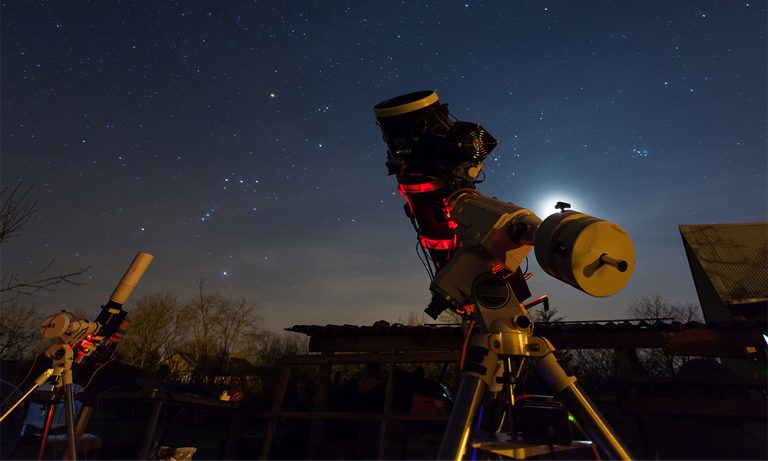12 Best Telescopes for Viewing Planets and Galaxies [2024]
Want to buy a telescope to see planets up close but don’t know where to start? You are in the right place.
The best telescope for viewing planets and galaxies comes with at least a 120mm aperture (astronomical sweet spot) and a 1,000mm focal length (preferably higher if your aperture is higher too).
Best Telescope for Viewing Planets and Galaxies
1. Orion 8945 SkyQuest XT8 Classic Dobsonian Telescope
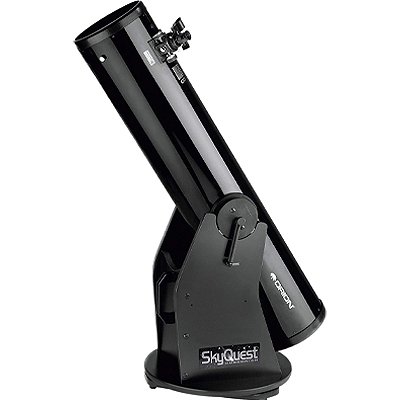
The Orion SkyQuest XT8 is a surprisingly large reflector telescope at a very affordable price.
Though reflectors often perform better viewing galaxies or other deep-sky objects, it’s of sufficient size to view the Moon, Jupiter, Saturn, and more planets with some detail.
The telescope has an aperture of 203mm and a focal length of 1500mm, providing a more wide-angle field of view.
While it’s a fantastic entry-point telescope, more advanced users will notice some flaws in the design choices and materials. For instance, the bearings for the base are made from cheaper materials, which can sometimes make adjustments harder than usual.
The primary mirror is also not correctly configured, meaning precision viewing isn’t always possible. However, this won’t typically be noticeable unless you’re a seasoned veteran. Overall, the Orion XT8 is an excellent entry-point telescope with a reasonable price, but it’s not the best option for advanced users.
It comes with a 2-inch Crayford focuser, a 25mm eyepiece, an EZ Finder reflex sight, a collimation cap, and access to astronomy software, Starry Night.
What We Liked
- Excellent choice for beginners or intermediate users
- Decent optics for beginners
- Lightweight (each piece is about 20 lbs)
- Great price for a reflector
What Can Be Improved
- Wide-angle field of view is better for viewing DSOs than planets
Type: Reflector (Dobsonian)
Aperture: 203mm (8 inch)
Focal Length: 1200mm
Eyepiece(s): 25mm
Magnification: 48x
Weight: 41 lbs
2. Celestron NexStar Evolution 8 Schmidt-Cassegrain Telescope
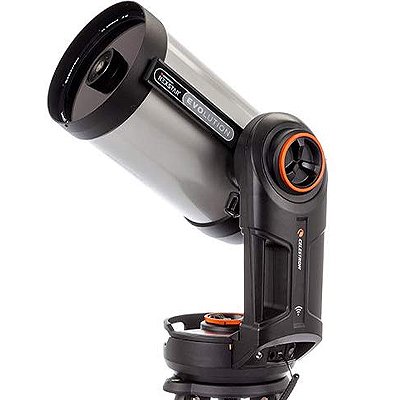
The NexStar Evolution 8 is the perfect choice for advanced users with a larger budget.
The telescope has a 203mm (8 inch) aperture, which offers an incredible and crystal-clear observation experience of planets and deep-sky objects.
The mount is computerized, so tracking and locating objects is exceptionally straightforward.
Additionally, you can connect it to a tablet or phone, and once it’s aligned, it’s effortless to jump to objects all around the night sky.
The only downside to this telescope is that it doesn’t come with a cable you need to update the controller software, which often comes with an outdated version. The cable is only $10, but it’s not USB compatible, so you’ll need to buy an adapter for it as well.
Overall though, this telescope is phenomenal and is the best telescope on this list for viewing planets!
It comes with a red-dot finderscope, stainless steel tripod, single fork arm altazimuth mount, a handy rechargeable battery (10 hours), and a controller app, Skyportal.
What We Liked
- Excellent choice for advanced users
- Exceptional optics
- Beautiful and precise imaging of planets
- Computerized mount makes finding objects in the sky incredibly easy
What Can Be Improved
- Doesn’t come with a cable necessary for updating software
- Higher Pricepoint
Type: Reflector (Schmidt-Cassegrain)
Aperture: 203mm (8 inch)
Focal Length: 2032mm
Eyepieces: 40mm and 13mm
Magnification: 51x, 156x, max 480x
Weight: 40 lbs
3. Orion 09007 SpaceProbe 130ST Equatorial Reflector Telescope
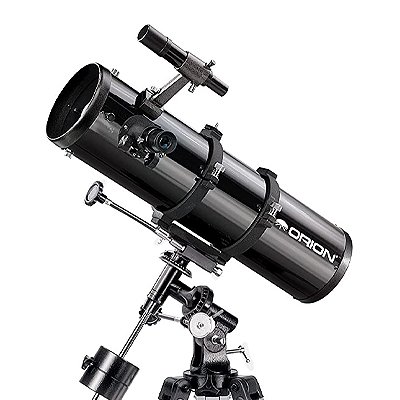
If you are looking for quality planetary telescopes to enjoy viewing the planets, the moon, and other sky objects as a family hobby, the Orion 09007 SpaceProbe 130ST Equatorial Reflector Telescope is a great choice.
It has a large 5.1 inch aperture that gathers ample amounts of light for great views.
The optical tube is only 24” long and the weight is 27 lbs, making it easy to pack into a car for a weekend away from the city lights.
Included in the kit are two 1.25 inch Sirius Plossl eyepieces, a 25mm, and a 10mm. Sirius Plossl is the best telescope eyepiece for viewing planets.
You also get a 6×30 FinderScope, a tripod accessory tray, a 1.25” rack and pinion focuser, and a collimation cap.
We enjoyed the sturdy EQ-2 equatorial telescope mount and adjustable tripod that allowed our smaller children to see great views of Saturn and Jupiter. Using the smooth manual slow-motion controls, we tracked the planets as they moved across the sky.
For beginners, this is a good telescope to see planets and the Starry Night astronomy software is extremely helpful and will keep you busy for hours.
What We Liked
- Great value-for-money telescope to see planets
- 5.1” aperture for crisp clear views
- 2 1.25 inch Sirius Plossl eyepieces, 25mm and 10mm
- Short 24” tube for portability
- EQ-2 equatorial telescope mount
- Adjustable tripod makes this a best telescope for viewing planets and galaxies
- Starry Night astronomy software
What Can Be Improved
- May be too simple for professionals
- Not motorized
Type: Refractor Telescope
Aperture: 130mm (5.1 inch)
Focal Length: 650mm
Eyepieces: 25mm, 10mm
Magnification: 26x, 65x
Weight: 24.2 lbs (10.9 kg)
Matching Eyepiece: Celestron 8-24mm 1.25″ Zoom Eyepiece
4. Sky Watcher Skymax 180 Planetary Telescope
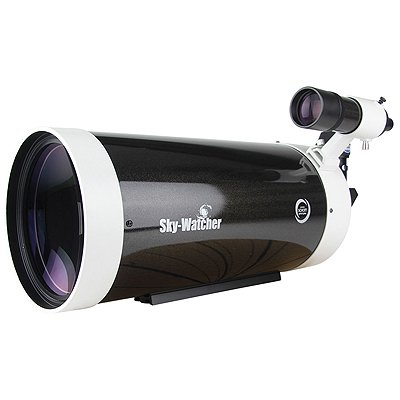
If you can invest more money in a lifetime purchase, the Sky Watcher Skymax 180 is an exceptional scope that will not disappoint.
It offers a 180mm aperture with fully multi-coated lenses. It has a 2700mm focal length and comes with a 28mm eyepiece, an 8×50 FinderScope, and 2” 90 degree Star diagonal.
Using this scope, we saw awe-inspiring views of the cloud banding of Jupiter and the rings of Saturn. We were able to see the green-blue disk of Neptune and spent many hours exploring the surface of the moon.
The scope does not come with a mount, which could be a problem for people who don’t have one. It will add additional cost to your setup. The scope has a Black V-style dovetail plate for attaching to a mount.
The views through this scope are exceptional. It features a meniscus-shaped corrector plate that eliminates any spherical aberration caused by the primary mirror.
The colors are sharp and clear with great contrasts. The Sky Watcher Skymax 180 is one of the best telescopes to see planets.
Being one of the more expensive scopes we reviewed, it was a great experience to see the high quality as compared to cheaper models.
What We Liked
- Large 7” aperture
- Full multi-coated lenses
- Exceptional color definition and contrast
- 278mm eyepiece
- Long 2700mm focal length
- Best telescope to view planets
- Mounting rings and a V-Style dovetail
What Can Be Improved
- High price
- Mount not included
- Best suited for experienced stargazers
Type: Maksutov-Cassegrain
Aperture: 180mm (7 inch)
Focal Length: 2700mm
Eyepieces: 28mm
Magnification: 48x
Weight: 23 lbs (10.4 kg)
Matching Eyepiece: Meade 1.25-Inch Xtreme Wide Angle 5.5mm Eyepiece
5. Sky Watcher Evostar 80 APO Planetary Telescope
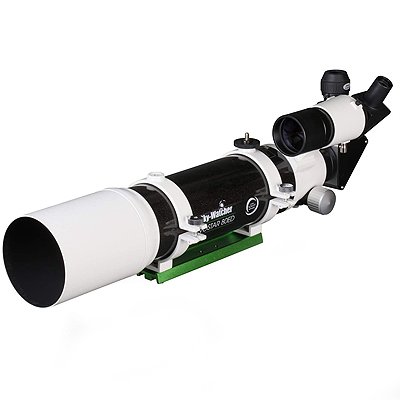
The Sky Watcher Evostar 80 APO Telescope is a more expensive scope with exceptional color correction for photographic uses.
We certainly had a blast seeing planets through a telescope and capturing images of Saturn, Venus, and Jupiter as well as details of the amazing lunar landscape.
This scope is a lifetime investment, allowing a new planet watcher to grow into a professional.
It offers the finest quality glass and proprietary Metallic High-Transmission Coatings. The Dual-Speed Focuser makes it easy to locate any object you want.
Included in the set is an 8×50 Right Angle Correct Image Finderscope, a 2” Dielectric Diagonal, a 5mm, and a 25mm LET Eyepiece, a 1.25” Adapter, Mounting Rings, and a V-Style Dovetail.
The scope comes in a foam-lined aluminum hard case for transporting. It does not come with a mount, which could be a problem for people who don’t have one. It will add additional cost to your setup.
What We Liked
- 3.1” aperture
- High quality APO design for astrophotography
- 2 LET eyepieces, 5mm and 25mm
- 600mm focal length
- Best telescope to see planets and stars
- Mounting Rings and a V-Style Dovetail
- Foam-lined aluminum hard case
What Can Be Improved
- Higher price
- Mount not included
Type: APO Telescope
Aperture: 80mm (3.1 inch)
Focal Length: 600mm
Eyepieces: 5mm, 25mm
Magnification: 11x, 200x
Weight: 22 lbs ( 9.9 kg)
Matching Eyepiece: Celestron 1.25” Eyepiece and Filter Accessory Kit
6. Celestron Omni XLT 120 Refractor Planet Telescope
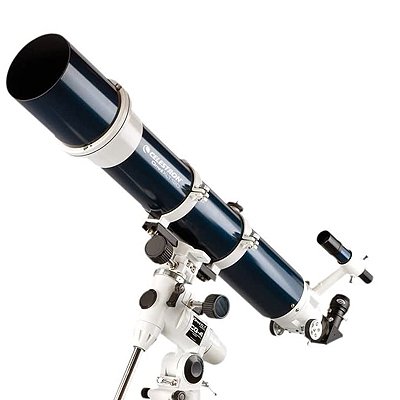
Getting hooked on viewing planets is a great family bonding hobby. It is amazing to see Neptune and Uranus, which look like small blue-green disks.
More exciting is to see the rings of Saturn and the details of craters on the moon. It was fun to review another best telescopes for viewing planets.
Using the top-quality astronomical telescope like the Celestron Omni XLT 120 Refractor, we set off for a weekend of fun.
This scope features a 120mm aperture that gives clear, crisp views. The optics have hand-selected mirrors, with Celestron StarBright XLT coatings, to provide maximized light transmission.
It comes with a Celestron CG-4 German equatorial telescope mount with slow motion controls for precise and easy locating of sky objects. The scope was simple to set up with no tools needed. Great, because I am no DIY expert!
To get started, we used the Sky Level 1 planetarium software that has over 10,000 objects and gave us enhanced images of the type of planets. The high-quality Celestron is one of the best planetary telescopes.
What We Liked
- 4.7” aperture
- Hand-selected glass optics with Celestron StarBright XLT coatings
- CG-4 German equatorial telescope mount
- Slow motion controls
- Easy setup – no tools required
- Best telescope to see planets clearly
- Sky Level 1 planetarium software with over 10,000 objects
What Can Be Improved
- Higher price
- Heavier than others we reviewed
Type: Refractor Telescope
Aperture: 120mm (4.7 inch)
Focal Length: 1000mm
Eyepieces: 30mm
Magnification: 40x
Weight: 46 lbs ( 20.8 kg)
Matching Eyepiece: Celestron 93433 Luminos 19mm Eyepiece
7. Celestron NexStar 5SE Telescope for Viewing Planets
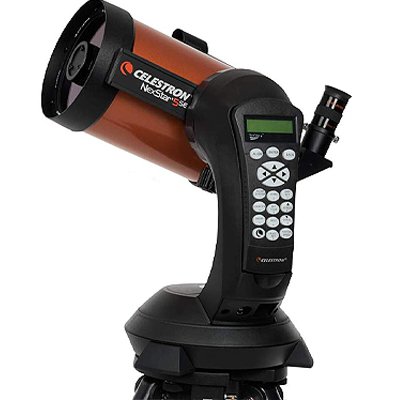
The Celestron NexStar 5SE is a quality telescope meant for beginners and advanced users alike, though it’s more suitable for intermediate users.
The 125mm aperture is just above the recommended sweet spot for aperture sizes and is excellent at gathering large quantities of light.
It has a focal length of 1250mm, which balances its capability between tracking planets and DSOs.
The 5SE comes equipped with a computerized GoTo mount, which is capable of tracking and finding any object you throw at it, or you can browse its database of over 40,000 objects.
Another downside is the price, which is relatively high for what you actually get with the telescope, though it is a reflector, and the optics are well-made.
It comes with a red-dot finderscope, a 25mm eyepiece, a mirror star diagonal, a tripod, and astronomy software Starry Night.
What We Liked
- Excellent telescope for intermediate users
- High-quality optics
- Lightweight and portable
- Database of 40,000+ objects
- Computerized GoTo mount makes viewing the cosmos a seamless experience
What Can Be Improved
- A bit higher-end pricing
- Hand-controller learning curve
Type: Reflector (Schmidt-Cassegrain)
Aperture: 125mm (4.9 inch)
Focal Length: 1250mm
Eyepiece(s): 25mm
Magnification: 50x
Weight: 28lbs
8. Sky-Watcher 10″ Collapsible Dobsonian Telescope
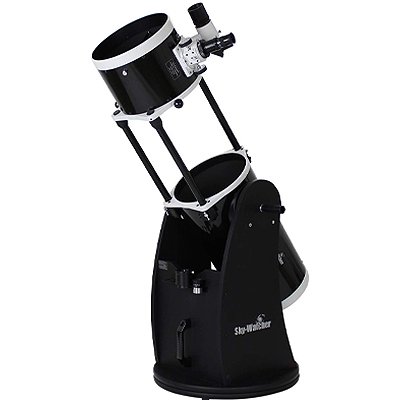
The Sky-Watcher 10” Collapsible Dobsonian Telescope is an absolute beast of a telescope for a very reasonable price.
It’s certainly not meant for beginners, though; it’s best for intermediate to advanced users who already know their way around a telescope.
It has a 254mm (10 inch) aperture with a 1200mm focal length, making it excel at viewing DSOs.
While its wide-angle field of view is not the best option for viewing details on planets, its sheer aperture size and light-gathering capability provide beautiful and clear images of the universe.
The collapsible feature is an excellent touch also, allowing an easy and quick transition from compact and portable to a fully-functional telescope. However, on the downside, it does take some time and effort to collimate the telescope effectively.
The screws for the collimation process can also be quite stiff, as well. It comes with an 8×50 RA viewfinder, two eyepieces (25mm and 10mm), and a sturdy mount.
What We Liked
- Fantastic viewing capabilities
- Optics are top quality
- Collapsible feature makes assembly and disassembly a quick process
- Computerized GoTo mount easy to track objects with
What Can Be Improved
- Can be difficult to collimate
Type: Reflector (Newtonian)
Aperture: 254mm
Focal Length: 1200mm
Eyepiece(s): 25mm and 10mm
Magnification: 48x, 120x
Weight: 42 lbs
9. Celestron NexStar 127SLT Computerized Telescope
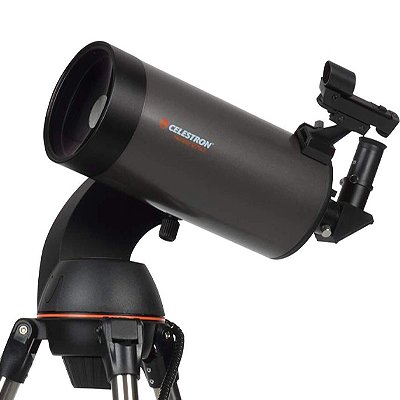
The Celestron NexStar 127SLT is an excellent beginner telescope.
It’s above our earlier recommended minimum range for aperture, and its affordable—a winning combination for budding astronomers on a budget!
Since it has a computerized GoTo mount, it assists with aligning the telescope, as well as locating and tracking objects from an included database of over 40,000 objects.
The hand controller for the computerized mount does have a bit of a learning curve but is otherwise effective at what it does.
With a focal length of 1500mm, an aperture of 127mm, and two eyepieces (25mm and 9mm), this telescope specifically excels at viewing planets, but is also capable of viewing a variety of deep-sky objects as well!
On the downside, the battery life for this telescope is reportedly quite short, so you’ll need to purchase an external power supply. It comes with a red-dot finderscope, two eyepieces, tripod, and access to astronomy software, Starry Night.
What We Liked
- Excellent choice for beginners
- High-quality optics
- Lightweight
- Computerized GoTo mount includes a database of 40,000 objects
- Mount also locates and tracks objects easily
What Can Be Improved
- Hand controller has a steep learning curve
- Mount is flimsy
Type: Compound (Maksutov-Cassegrain)
Aperture: 127mm (5 inch)
Focal Length: 1500mm
Eyepiece(s): 25mm and 9mm
Magnification: 60x, 167x
Weight: 18 lbs
10. Celestron AstroFi 102 Planetary Telescope
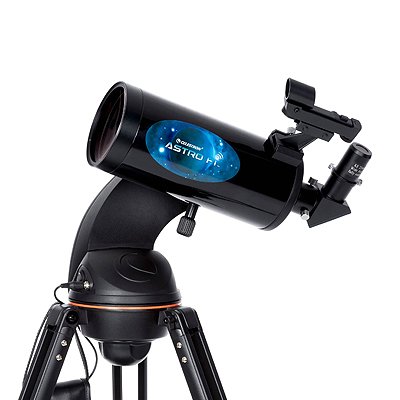
After working with manually controlled scopes, it was exciting to try out a computerized telescope.
The Celestron Astro 102 has integrated WiFi and includes a Celestron SkyPortal app for iPhone, iPad, and Android devices.
My teen children, being techno-whizzes, were ready to get their fingers flying over the touchscreen.
This best telescope for planets has a classic Maksutov Cassegrain design with a 102mm aperture and fully coated high-quality glass optics.
It comes with 2 Kellner eyepieces, a 25mm and a 10mm, a FinderScope, a star diagonal, and an integrated smartphone adapter.
The tripod has an adjustable height, which was great for smaller children. The accessory tray is convenient, allowing us to keep all our bits and pieces close at hand.
Using the planet telescope was easy and we could quickly locate a planet and get stunning views. Seeing the rings of Saturn sent shivers down my spine!
What We Liked
- 4” aperture
- High-quality fully coated glass optics
- 2 Kellner eyepieces, 25mm and 10mm
- Computerized, includes Celestron SkyPortal app for iPhone, iPad, and Android devices
- Integrated WiFi
- FinderScope, integrated smartphone adapter
- Adjustable tripod
What Can Be Improved
- Higher price
- Computer App may not suit all users
Type: Maksutov Cassegrain
Aperture: 102mm (4 inch)
Focal Length: 1325mm
Eyepieces: 25mm, 10mm
Magnification: 53x, 132x
Weight: 14.2 lbs (6.44 kg)
Matching Eyepiece: Orion E-Series 7-21mm Zoom Eyepiece
11. Explore Scientific FirstLight AR102 TN Refractor Telescope
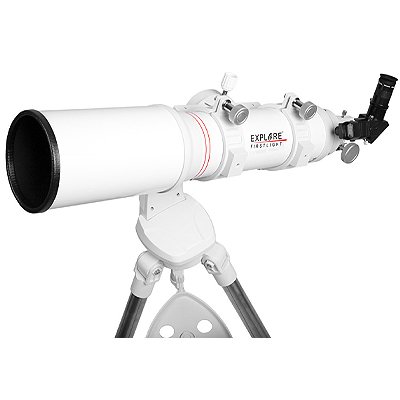
The next scope we reviewed for watching planets was the Explore Scientific FirstLight AR102 TN, a refractor scope.
The cool white tube was awesome – ultra-modern and stylish. The AR102 features a 102mm aperture and a 600mm focal length. It comes with a Plossl 25mm eyepiece and a 1.25″ 90-degree Diagonal.
We were awe-struck by views of the rugged Moon surface and Jupiter’s cloud banding. On a clear night, we saw all four of its major Galilean moons. This is certainly a great telescope to see planets and stars clearly.
Mounted on a Twilight Nano Alt/Az mount, the telescope is stable, and it is very easy to locate any celestial object you desire. The legs adjust to give you the height you want, a great perk for our smaller children.
The altazimuth mount allows movement both horizontally and vertically, making it very precise to operate. It also has an HD132 Red-dot Finder and a Smartphone Camera adapter.
The included Sky Software program is a helpful planetary watch tool for beginner stargazers.
What We Liked
- Well priced
- Stylish white tube
- 4” aperture for crisp clear views
- 1 Plossl 25mm eyepiece
- Great for planetary viewing
- Twilight Nano Alt/Az mount
- Best beginner telescope for planets – easy to set up
- HD132 Red-dot Finder
What Can Be Improved
- May be too simple for professionals
- Not motorized
- Only has one eyepiece
Type: Refractor Telescope
Aperture: 102mm (4 inch)
Focal Length: 660mm
Eyepieces: 25mm
Magnification: 15x
Weight: 11.5 lbs (5.2 kg)
Matching Eyepiece: Celestron X-Cel LX Series 1.25in Eyepiece
12. Orion AstroView 90mm EQ Refractor Planetary Telescope
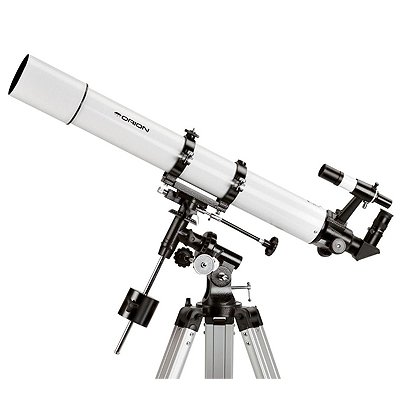
The planets of the Solar System are some of the most exciting celestial objects to view through a telescope.
Using the Orion AstroView 90mm EQ Refractor, we saw amazing close-up images of planets like Saturn and Jupiter. It is a great telescope to see Mars.
This very well priced best refractor telescope for planets comes with a 3.5″ aperture and 910mm focal length.
It has an EQ-2 equatorial mount with manual slow-motion controls that allow smooth and precise movement. Even my younger children could adjust the scope to keep the planet in view as it tracked across the sky.
The kit contains two Sirius Plossl 1.25″ eyepieces, a 25mm and a 10mm, a 6×30 finder scope, and a 90-degree mirror diagonal.
To help us along, we downloaded the Starry Night astronomy software and made use of the MoonMap 260. The Orion AstroView 90mm EQ Refractor is the best telescope to see planets.
What We Liked
- Well priced
- 3.5” aperture for crisp clear views
- 2 Sirius Plossl 1.25″ eyepieces, 25mm and 10mm
- Excellent planet viewing telescope
- Manual EQ-2 equatorial mount
- Slow-motion controls for ease of use
- Adjustable tripod lets you set the telescope to the perfect height
What Can Be Improved
- May be too simple for professionals
- Not motorized
- Some users complained about bad chromatic aberration
Type: Refractor Telescope
Aperture: 90mm (3.5 inch)
Focal Length: 910mm
Eyepieces: 25mm and 10mm
Magnification: 36x, 91x
Weight: 23.7 lbs (10.75 kg)
Also read:
- 5 Best Dobsonian Telescopes in 2020 [From 8 to 12-inch Options]
- 5 Best Star Projectors in 2020 [for Home Planetarium]
- 5 Best Travel Telescopes in 2020 [Portable & Durable]
- 5 Best Schmidt Cassegrain Telescopes Worth the Money (2020)
How to Observe Planets and Galaxies?
Most of the planets in our solar system—Mercury, Venus, Mars, Jupiter, and Saturn—are already visible to the naked eye from Earth.
Even with a decent pair of 25x binoculars, you can make out the rings of Saturn, albeit only slightly. With a telescope, though, you can easily observe planets and other deep space objects in much better detail!
But what magnifications do you really need for specific planets? Below, we’ve listed some planets and what magnification ranges we recommend for a pleasant viewing experience:
| Planet | Recommended Magnifications |
|
Saturn |
25x – 50x |
|
Saturn’s Rings |
150x |
|
Mars |
100x – 200x |
|
Jupiter |
180x – 300x |
We left out Mercury and Venus because they are quite challenging to observe! Observing Mercury requires a solar filter for your telescope and a lot of patience. Venus is the most difficult to find of the two, as it’s best viewed during the day and hides behind a thick cloud.
Types of Telescopes for Planetary Viewing
The two main types of telescopes are reflectors and refractors. Refractors use lenses to gather light and focus it to an observer, while a reflector gathers and focuses the light using mirrors. While both types will work for planetary viewing, a refractor is typically a more economical choice for a beginner or intermediate astronomer.
Refractors
Refractors generally offer higher apertures for lower prices, making them an excellent choice for viewing planets or for astrophotography. Some refractors due suffer from chromatic aberration, which causes an object to exhibit a light-ring around it, but many are now apochromatic, which fixes this issue.
Reflectors
Reflectors, on the other hand, excel at gathering larger amounts of light for observing deep-sky objects such as galaxies and nebulae. For optimum planetary viewing, they generally require a higher aperture, typically around 150mm or higher. This inevitably makes them more expensive than refractors.
So, unless you don’t have a budget to worry about, refractors are the best bang for your buck for viewing planetary bodies.
How to Choose a Planetary Telescope?
Aperture
Aperture is the most crucial metric for all telescopes, regardless of what you’re viewing. The aperture of a telescope is simply the diameter of the primary lens or mirror, called the “objective.” The larger the lens or mirror, the better the observing quality, but also the more expensive they get.
- For viewing planets crisply and clearly, the best telescope will have a decently large aperture, at least 80mm or 90mm.
- We recommend using a telescope with an aperture of at least 100mm or 120mm to view planets and the moon (120mm is widely regarded as the “sweet spot” for astronomical viewing).
- A telescope’s ability to gather light is proportional to the area of its mirror or lens, and aperture also follows a square-rule.
- So, a reflective telescope with a 200mm aperture gathers nearly four times as much light as a 100mm. This means that the crispest and clearest images of planets come from telescopes with apertures over 200mm!
Focal length
Once a telescope gathers light through its primary lens or mirror, it travels down to the back to another set of optics that focuses it and displays an image of a distant object. Focal length simply measures this distance the light has to travel from the front of the telescope to the back.
- Focal length also affects viewing capability—longer focal lengths offer more focused and narrower images of objects, while a short focal length provides a much wider field of view.
- Because of the affect focal length has on your field of view with a telescope, a longer focal length is perfect for viewing planets or single objects.
- It makes them appear larger and provides much greater detail. If you’re looking to see Saturn, the Moon, or any other planets, you’ll want a telescope with a minimum focal length of at least 1,000mm (preferably higher if your aperture is higher too).
High-Magnification Eyepieces
The objective or front-end of a telescope gathers the light and focuses it through the tube. But, for us to view the image clearly, telescopes require an eyepiece. Eyepieces are a collection of lenses that magnify the light gathered by the lens or mirror at the front, presenting a clear image of whatever object you may be observing.
Eyepieces have their own focal length as well, which, when divided by the focal length of a telescope, determines the magnification capabilities. For instance, if a telescope has a 1000mm focal length, and the eyepiece focal length is 10mm, the total magnification of the eyepiece will be 100x. The shorter the eyepiece focal length, the greater the magnification, and vice versa.
There is always a limit to the effectiveness of magnification, depending on the telescope’s aperture. The maximum effectiveness for an eyepiece’s magnification is about 50x for every inch of your telescope’s aperture. So, if you’re picking up a 127 mm (5 inch) telescope, multiply 5 inches by 50, and you have a maximum magnification of 250x.
Anything beyond this point will most likely appear distorted, fuzzy, and dim. However, this is just a general rule. Depending on observing conditions, eyepiece magnification can perform at less than 35x every inch or up to 75x.
Additionally, if you’d like to utilize every decimal of possible magnification for your telescope, you can divide the focal length of the telescope by the total magnification. So, a telescope with a focal length of 1,000mm and a max magnification of 250x will benefit the best from a 4mm eyepiece.
Frequently asked questions
Can you see Pluto with a telescope?
Can you see Pluto with a telescope? Yes, you can! However, it is very dim in the sky and you would need a fairly large telescope with an aperture of at least 10 inches.
What is the best telescope for viewing planets?
People often ask me “What is the best telescope for viewing planets?” For a family wanting a hobby, I recommend the well priced Orion AstroView 90mm EQ Refractor. It comes with 2 eyepieces and an EQ-2 equatorial mount.
How strong does a telescope have to be to see planets?
To view planets like Saturn and Jupiter, a telescope with an aperture of 3.5” to 6” is ideal. The bigger the aperture, the better the images you will get.
What magnification do you need to see planets?
Another question that concerns beginners is “What magnification do you need to see planets?” Magnifications on a best telescope for viewing planets will range between 20x to 200x. Having a very large magnification does not always produce a good image, as it can become distorted.
Are Dobsonian telescopes good for viewing planets?
The Dobsonian design is a pure reflector and there are no issues with color fringing. As a good telescope for viewing planets, low cost Dobsonian telescopes will give great views of the planets in our Solar System, as well as star clusters, nebula, and deep sky objects.
What type of telescope is best for viewing planets?
Other common questions are – what is a good telescope to see planets and how strong does a telescope have to be to see planets? Both refractor and reflector telescopes are best for viewing planets. A good quality telescope with an aperture of 3.5” to 6” will give a beginner great views.
What is the best telescope to see the rings of Saturn?
We found that the Celestron AstroFi 102 Telescope is an amazing Saturn telescope and gave us fabulous images of the Rings. The 4” aperture allowed us to see individual rings, separate from the planet! This is the perfect telescope to see Saturn Rings.
What magnification do you need to see Jupiter?
For serious viewing of Jupiter, a telescope with an aperture of 4 to 6 inches is best. Magnification on these scopes can range from 40x to 200x. At high magnifications, you even get to see the Great Red Spot. A great telescope to see Jupiter is the Celestron AstroFi 102 Telescope.
What magnification do you need to see Venus?
Venus is a very bright planet that you can see with the naked eye. A small telescope with magnifications of 20x upwards will show great images of Venus.
What telescope is best for viewing galaxies?
The Celestron Omni XLT 120 Refractor Telescope is best for viewing galaxies. It features a 4.7” aperture and has hand-selected glass optics with Celestron StarBright XLT coatings.
What planets will be visible in 2020?
This year, using a cheap telescope to see planets, you will be able to view great images of Venus, Mars, Jupiter, and Saturn. With a stronger telescope, you can also see Mercury, Uranus, and Neptune.

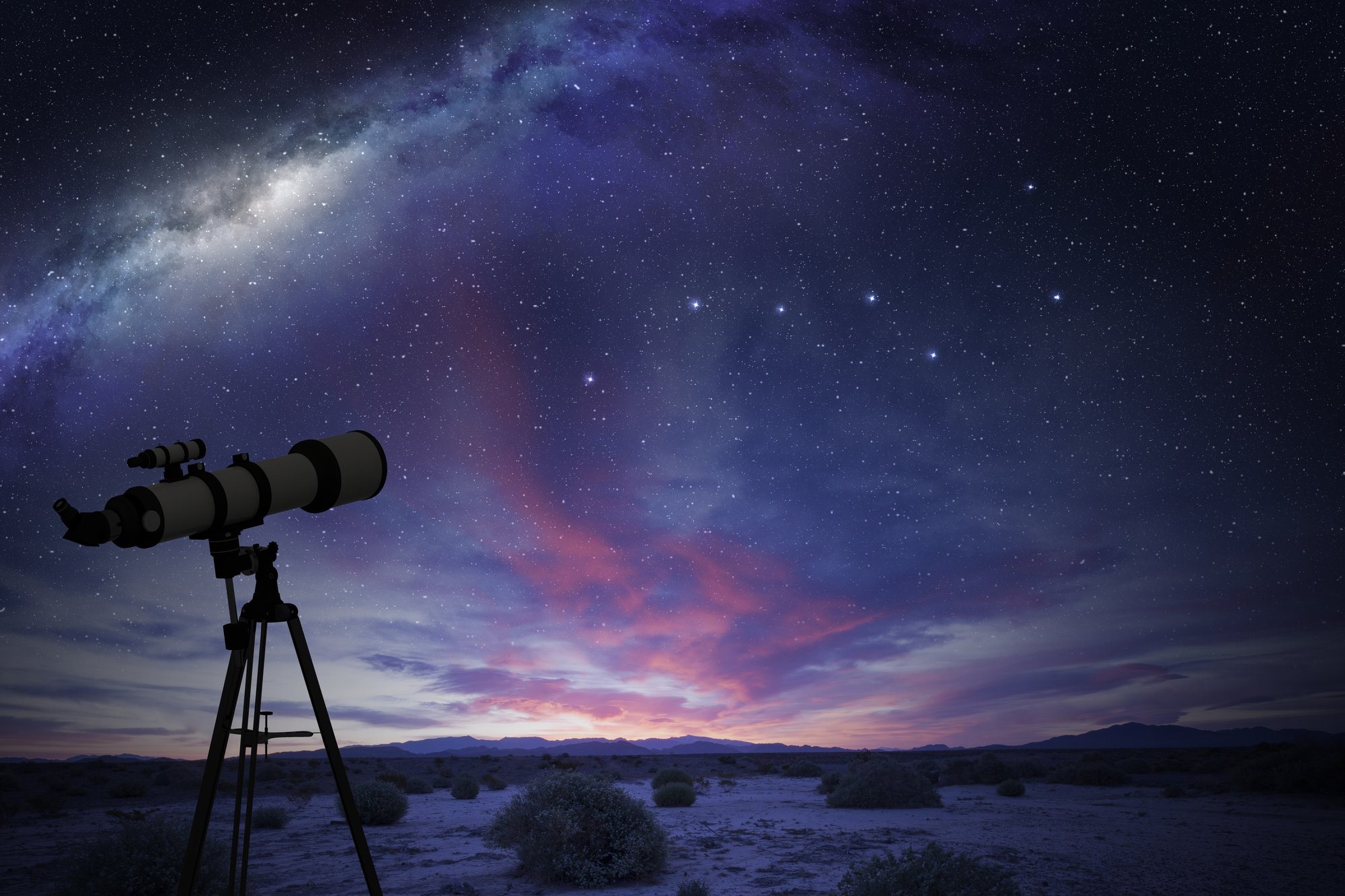



![5 Best Solar Telescopes in 2024 [to Observe The Sun]](https://www.planetguide.net/wp-content/uploads/2020/01/solar-telescope-768x461.jpg)
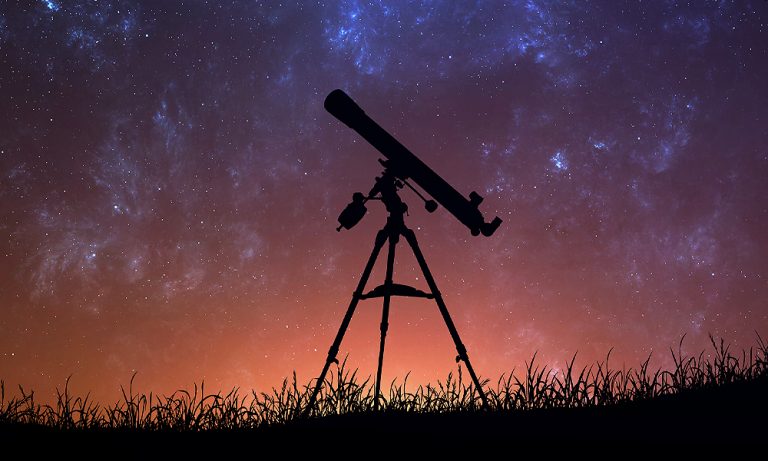
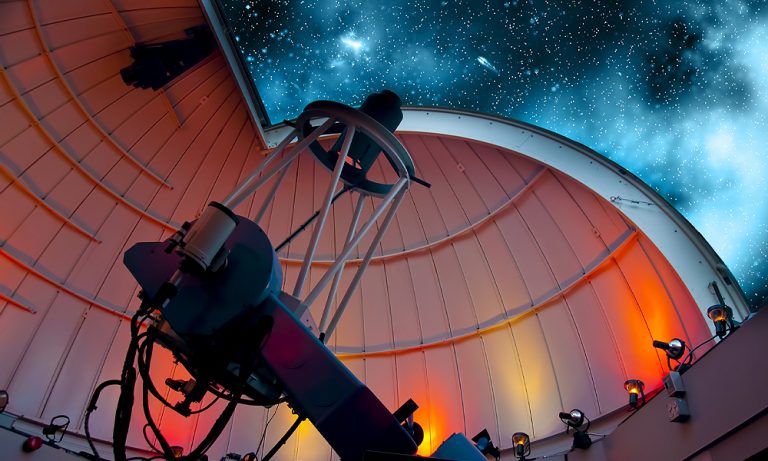
![12 Best Beginner Telescopes in 2024 [Actually Simple to Use]](https://www.planetguide.net/wp-content/uploads/2020/06/rfe-768x488.jpg)
